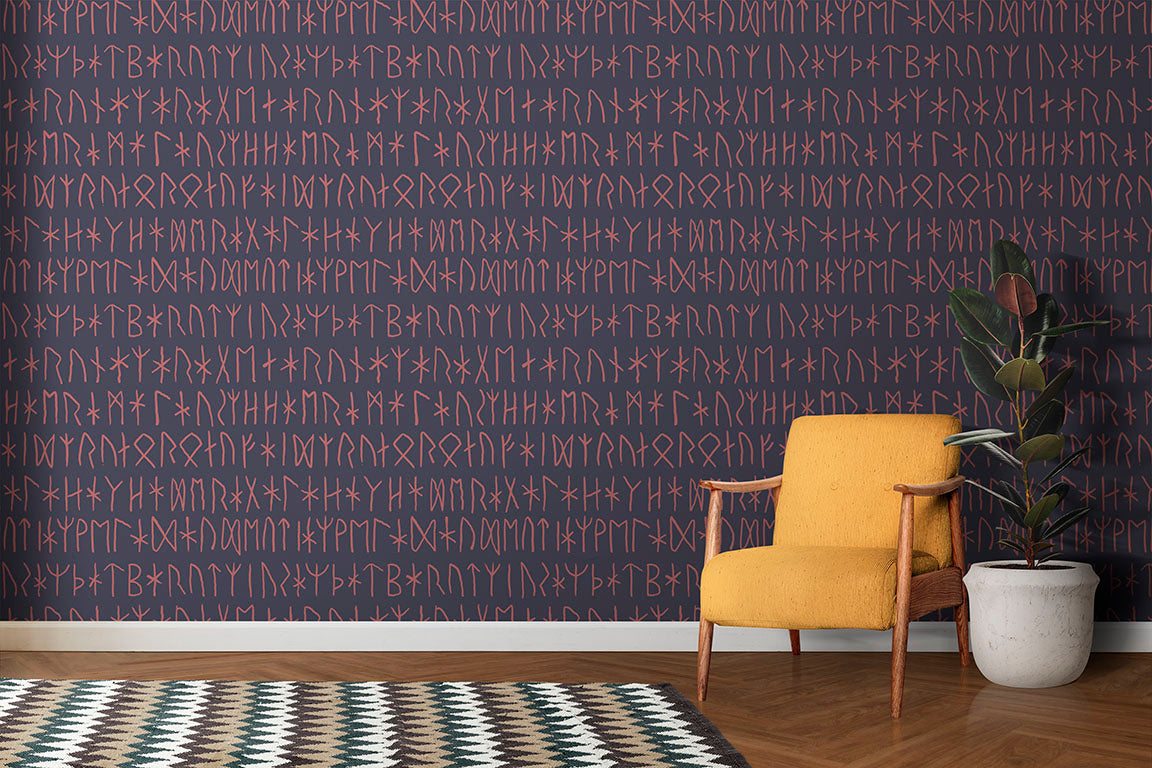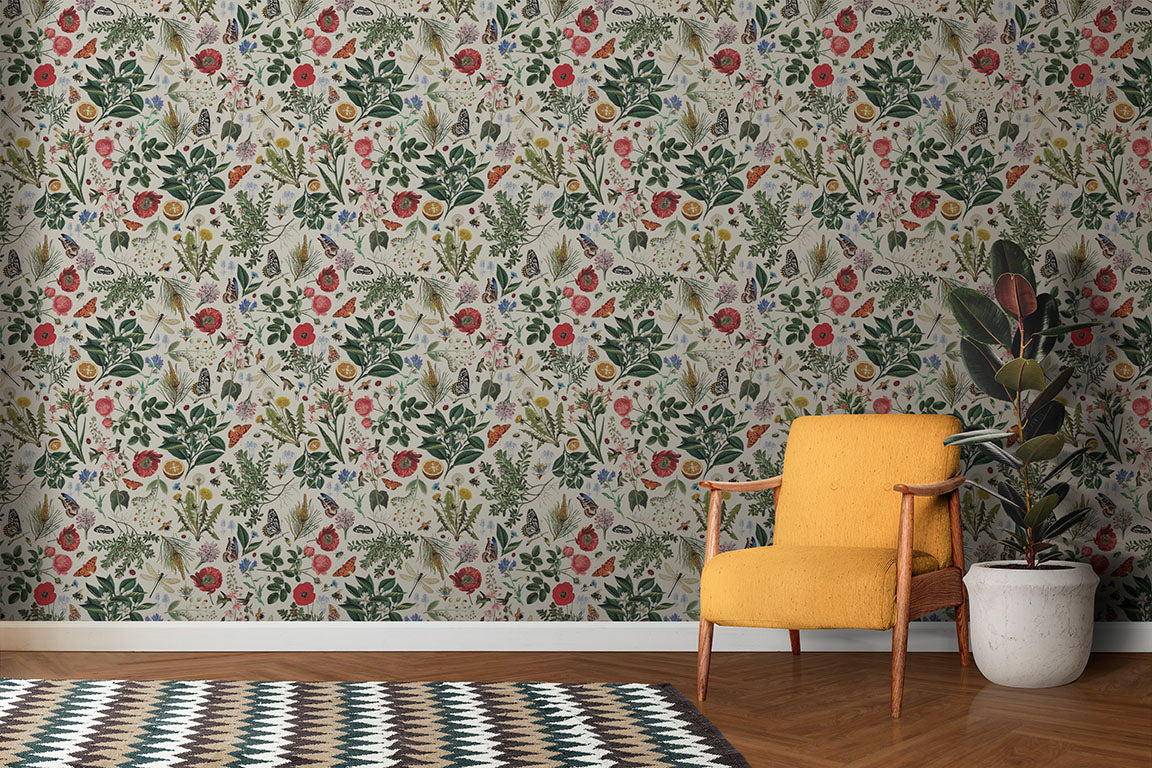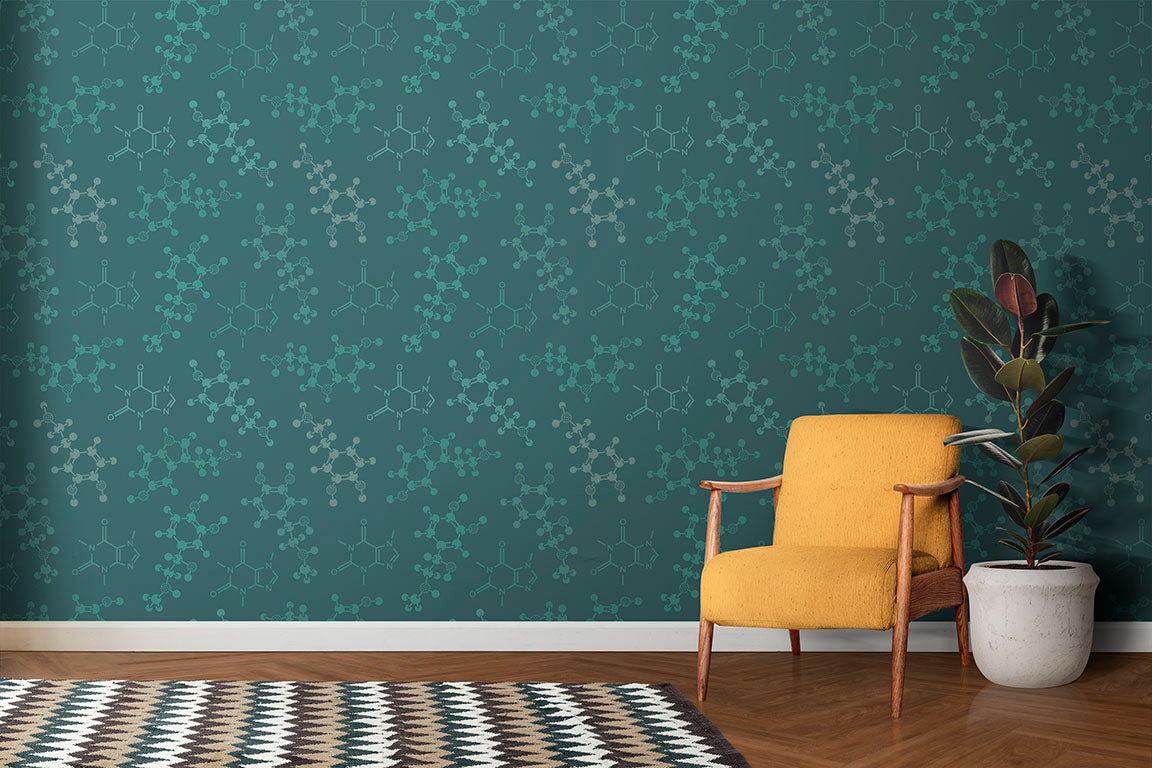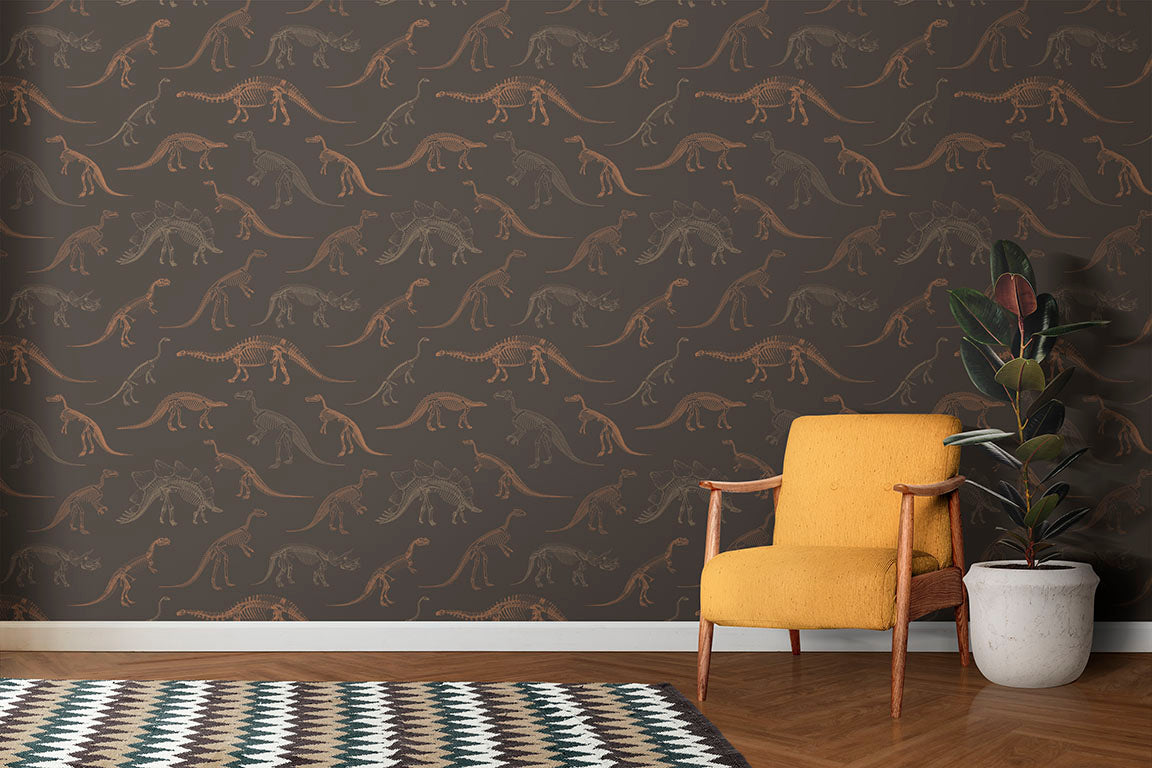



Peel and Stick Wallpaper Guide
Whether you’re a seasoned decorator or a DIY beginner, we aim to make your decorating process as seamless as possible.
-
Peel and Stick wallpaper is a self-adhesive wall covering option that allows you to add style and character to any room quickly and easily. The wallpaper has an adhesive back that sticks to your walls without glue. It’s perfect for renters and homeowners alike, as it’s easy to install, reposition, and remove without damaging your walls.
-
- Peel and stick wallpaper is made from 100% polyester woven fabric with adhesive backing and can be repositioned up to 24 hours after the first application. The polyester textile is made from recycled materials, has a matte surface, and most importantly, is PVC-free.
- Traditional Non-pasted non-woven wallpaper is paper-based, with a matt finish and soft touch. It is free of glass fiber, plasticizers, solvents and is PVC-free, making it one of the more environmentally-friendly options in the industry.
-
Our products are eco-friendly, printed with water-based inks. They offer a range of unique designs to suit every style. They are designed to make the installation process as straightforward as possible.
-
Yes, it’s designed to peel off easily without damaging your walls or leaving any residue in case your wall has been primed and prepared following all guidelines.
-
Our peel and stick wallpaper can be used in a bathroom under certain conditions.
First, after the application, peel and stick wallpaper can’t be in direct and consistent contact with water (inside a shower cabinet, right next to a bath, etc.).
Second, peel and stick wallpaper must be applied on a dry and clean wall; otherwise, it will not adhere properly. It will not stick, and/or it may start peeling off if you have applied it to a damp surface.
Third, most likely, it will not work if there are ventilation problems and extreme humidity in the bathroom.
-
Our peel and stick wallpaper will stick to concrete. You will first need to clean the concrete. Keep in mind that wallpaper works best on smooth surfaces. For better performance on concrete, we recommend applying lining paper.
-
Our wallpaper is not recommended for textured walls to ensure the best possible performance and appearance of the wallpaper. However, we have found in tests that our peel and stick wallpaper does stick to a variety of lightly textured walls better than various vinyl wallpapers.
However, we recommend ordering a sample of the wallpaper and keeping it on the wall for 2-3 days. If the wallpaper remains on the wall and is not peeling off, you can place an order. Nevertheless, none of the wallpapers will hide the texture of your wall after application.
Therefore, pay attention to the surface of the wallpaper after its application on the textured wall to make sure you are satisfied with the outcome.
-
Our wallpaper will stick to most flat, dry, and clean surfaces if they are not heavily textured. However, it is recommended that you order a sample to try it out and see the outcome. Do not apply it on surfaces that have been painted with oil-based paint.
-
Our peel and stick wallpaper will stick onto a tile wall, but we recommend ordering a sample to ensure that tile joints are not visible after applying the wallpaper. In most cases, the gap between tiles is filled with grout, which is slightly below the surface of the tile, and after applying wallpaper, joints can be visible.
-
You can apply our peel and stick wallpaper to paneling if the paneling is smooth. Keep in mind that over time, adhesives can impact the surface of the paneling, and we can’t guarantee that paneling paint will stay the same over time. Again, similar to application on wooden surfaces, peel and stick wallpaper shouldn’t be applied to greasy or oil-based paints.
-
It will stick to kitchen cabinets similarly to any smooth wooden material with a smooth surface. Just make sure you remove any grease and dirt before the application. Again, similar to application on wooden surfaces, peel and stick wallpaper shouldn’t be applied to greasy or oil-based paints. During our test, it was very easy to apply peel and stick wallpaper on the MDF kitchen cabinet.
-
Peel and stick wallpaper is often ordered and used for a backsplash. However, you need to keep peel and stick wallpaper—or any other wallpaper—away from open fire and heat. In case of using it for a backsplash, we recommend applying it on a smooth, dry, and clean surface. Please apply a primer on drywalls if they haven’t been covered with plaster or any other coating.
-
Applying self-adhesive wallpaper to the ceiling is also an option, and we have seen pictures of it done. It can be applied to the ceiling if the surface is smooth, but it might require extra effort since the application has to be done over your head.
Step-by-Step Instructions
-
Before diving into the installation process, make sure you have the essential tools on hand. We recommend preparing the following tools: level, utility knife, measuring tape, pencil, cloth or squeegee for smoothing.
-
The first step is to ensure your wall is clean and dry. This is crucial for the wallpaper to stick properly.
-
Start from the top of your wall and gradually press the wallpaper onto the surface, smoothing out any bubbles as you go. Carefully trim any excess paper with your utility knife.
-
To keep your wallpaper looking its best, clean it with a damp cloth and avoid using harsh chemicals.
-
When you're ready for a change, start at a corner and peel the wallpaper off slowly. It won't leave any residue behind.
Non-Pasted Wallpaper Guide
Whether you’re a seasoned decorator or a DIY beginner, we aim to make your decorating process as seamless as possible.
-
Non-pasted wallpapers require a separate adhesive application, but they promise an enduring and sophisticated finish. The process might involve a few more steps than the peel and stick variant, but with our guide, you’ll find it’s a journey worth taking.
Our PVC-free & FSC-Mix certified non-pasted wallpapers are a testament to sustainable luxury. Meticulously crafted, they marry eco-friendliness with exquisite design.
-
The beauty of non-pasted lies in the control it offers! You decide on the adhesive, ensuring an optimal fit for your space.
-
Given proper care, your non-pasted wallpaper can remain vibrant and intact for over a decade.
-
We suggest opting for our Peel and Stick wallpaper, which is splash-resistant and meant for installation in the bathroom.
If you decide to try Non-Pasted wallpaper in your bathroom it's possible under certain conditions.
First, we recommend using common pastes which are made for paper-based non-woven wallpapers like Roman PRO-880 Ultra Clear (available in the US) or Methylan Direct (available in Europe) for non-woven wallpapers.
Second, after the application, Non-pasted wallpaper can’t be in direct and consistent contact with water (inside a shower cabinet, right next to a bath, etc.).
Third, most likely, it will not work if there are ventilation problems and extreme humidity in the bathroom.
-
Non-pasted wallpaper will stick to concrete. You will first need to clean the concrete. Keep in mind that wallpaper works best on smooth surfaces. For better performance on concrete, we recommend applying lining paper.
-
Our wallpaper is not recommended for textured walls to ensure the best possible performance and appearance of the wallpaper.
However, we have found in tests that our Non-pasted wallpaper does stick to a variety of lightly textured walls.
However, we recommend ordering a sample of the wallpaper and keeping it on the wall for 2-3 days. If the wallpaper remains on the wall and is not peeling off, you can place an order. Nevertheless, none of the wallpapers will hide the texture of your wall after application.
Therefore, pay attention to the surface of the wallpaper after its application on the textured wall to make sure you are satisfied with the outcome.
-
Non-pasted wallpaper will stick onto a tile wall if a suitable paste is used. Check with your local paste vendors. However, we recommend ordering a sample to ensure that tile joints are not visible after applying the wallpaper. In most cases, the gap between tiles is filled with grout, which is slightly below the surface of the tile, and after applying wallpaper, joints can be visible.
-
You can apply our Non-pasted wallpaper to paneling if the paneling is smooth. Keep in mind that over time, adhesives can impact the surface of the paneling, and we can’t guarantee that paneling paint will stay the same over time. Again, similar to application on wooden surfaces, make sure that you use a proper paste so it does not ruin the surface.
-
Non-pasted wallpaper can be used for a backsplash. However, you need to keep Non-pasted wallpaper—or any other wallpaper—away from open fire and heat. In case of using it for a backsplash, we recommend checking what kind of paste is best to use on your backsplash area with a local paste vendor.
-
Applying Non-pasted traditional wallpaper to the ceiling is also an option. It will require extra effort since the application has to be done over your head. Also the paste has to hold more weight in comparison to vertical surfaces.
-
- Peel and stick wallpaper is made from 100% polyester woven fabric with adhesive backing and can be repositioned up to 24 hours after the first application. The polyester textile is made from recycled materials, has a matte surface, and most importantly, is PVC-free.
- Traditional Non-pasted non-woven wallpaper is paper-based, with a matt finish and soft touch. It is free of glass fiber, plasticizers, solvents and is PVC-free, making it one of the more environmentally-friendly options in the industry.
Step-by-Step Instructions
-
Before commencing with the application, ensure you have all the required tools. Having all tools on hand prior installation provides a smooth process and optimal results.
-
Ensuring your wall is ready is foundational for an impeccable finish. Discover every crucial step in our video tutorial, from the essentials of wall prep to primer application.
-
The application is an art, and our comprehensive guide ensures you master it. From measuring to cutting, learn every step in detail with our video tutorial.
-
While non-pasted wallpapers are designed for durability, they benefit from regular care. For the daily dust and occasional stains, a damp sponge is your wallpaper's best friend. Stay clear of harsh chemicals.
Sustainability
-
- Peel and stick wallpaper is printed using resin inks that are eco-friendly and odorless. It is a perfect blend of sustainability and performance because the ink is water-based, and it is better in terms of scratch resistance compared to the wallpaper offered by other wallpaper companies.
- Non-pasted wallpaper is printed using ECO-solvent inks.
-
Our peel and stick wallpaper is printed using Resin Inks, which features an aqueous (water-based) construction that has been formulated to meet the ecological and OH&S certifications. Resin Inks have a GreenGuard Gold certificate, which means the wallpaper is built to contribute to safer, healthier air for you and your family.
Our non-pasted traditional wallpaper is printed using UltraChrome GS3 inks with Red. The inks deliver a wide color gamut due to higher pigment density – resulting in better image quality and outstanding color performance. These inks have a GreenGuard Gold certificate.
-
Both peel and stick wallpaper and non-pasted wallpaper is free of PVC, which is one of the most widely used types of plastics. PVC-free stands for material that is free from polyvinyl chloride.
-
Our peel and stick material is made of 100% PET, which is a recyclable plastic and is formulated to be remade.
-
Our peel and stick wallpaper meets the SCS indoor air quality standard criteria and has received the Indoor AdvantageTM Gold, which means our wallpaper conforms to furniture emission standards.
-
Our Non-pasted traditional wallpaper has aC (acc. EN 13501-1) fire rating which, according to European fire standards, means it has limited contribution to fire.
-
FSC certification ensures that products come from responsibly managed forests that provide environmental, social, and economic benefits.
Our non-pasted wallpaper is made of FSC certified materials.
-
Our peel and stick wallpaper is made of 100% PET and can be fully recycled.
Our Non-pasted traditional wallpaper is paper-based and can be fully recycled.
-
The backing of peel and stick wallpaper can be recycled like paper.
-
The package contains the following materials:
- Cardboard tube – can be recycled as paper
- Staples – you can recycle staples similarly to cans
- Plastic caps of cardboard tube – please check the recycling options from your waste management company







